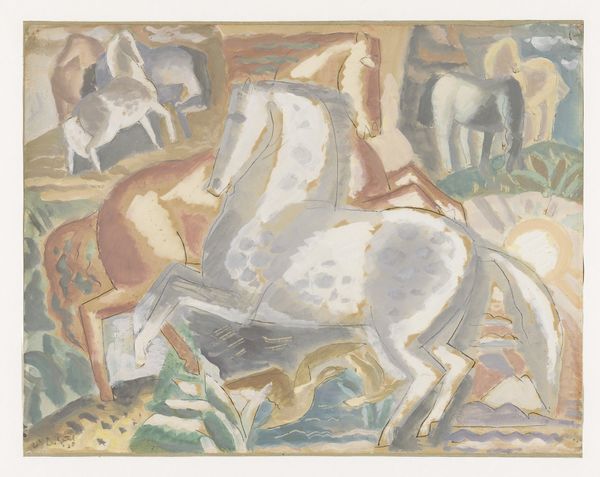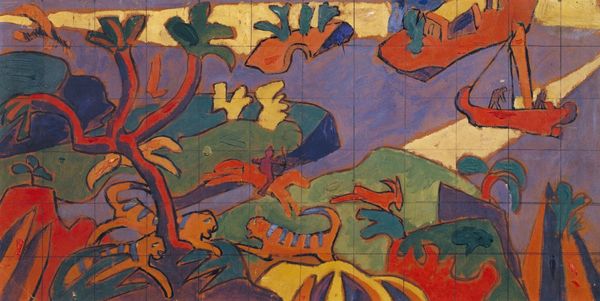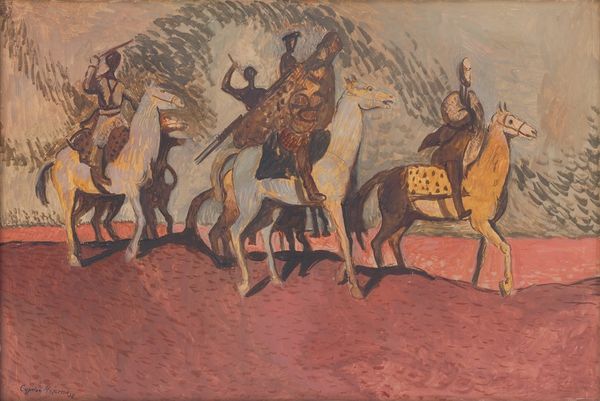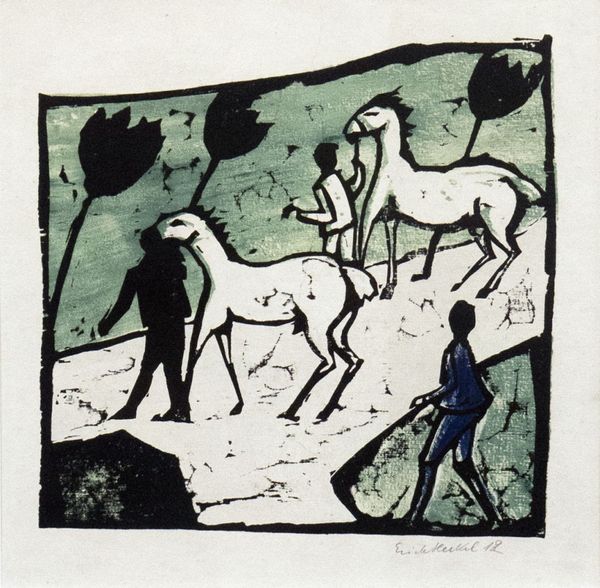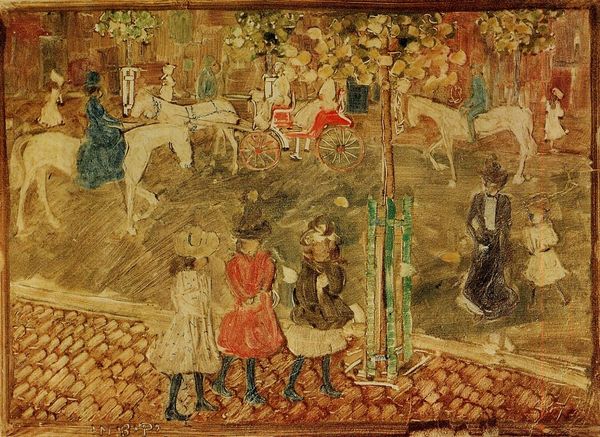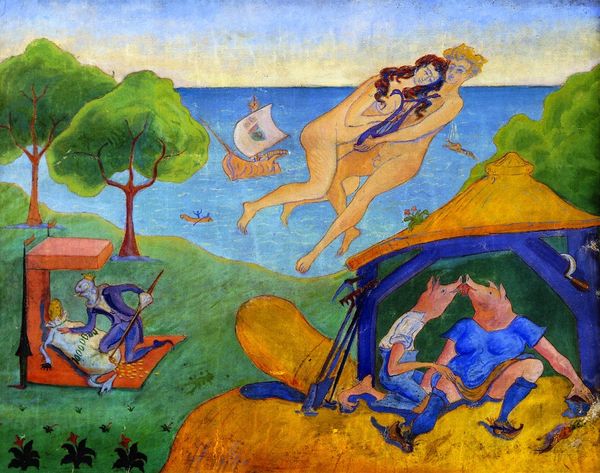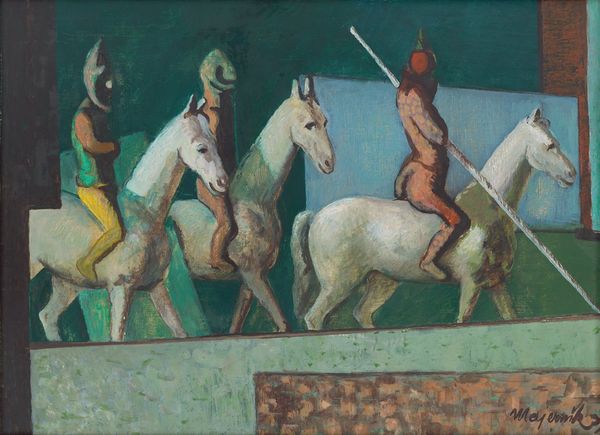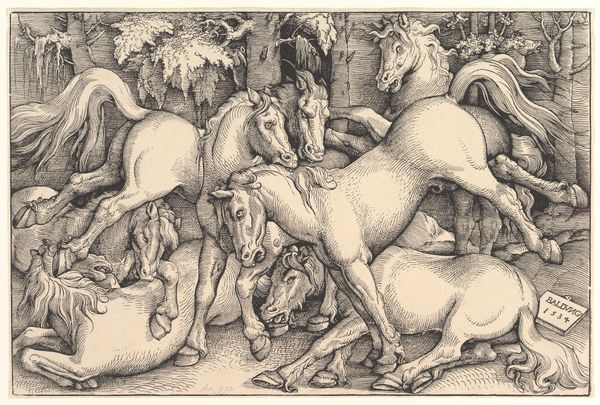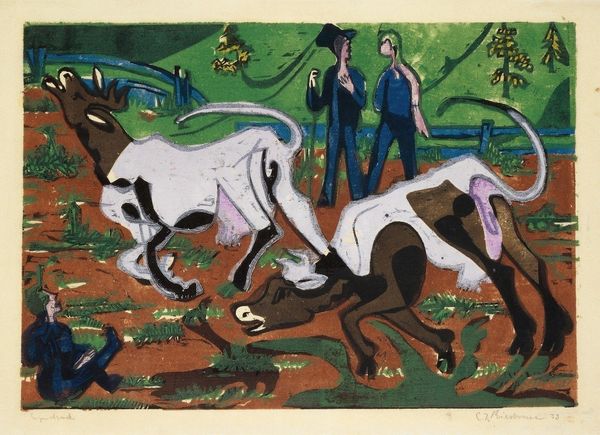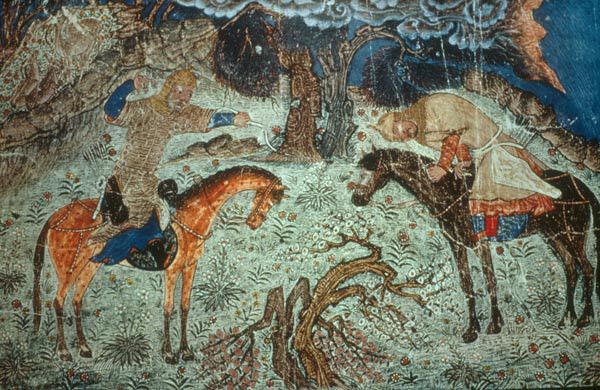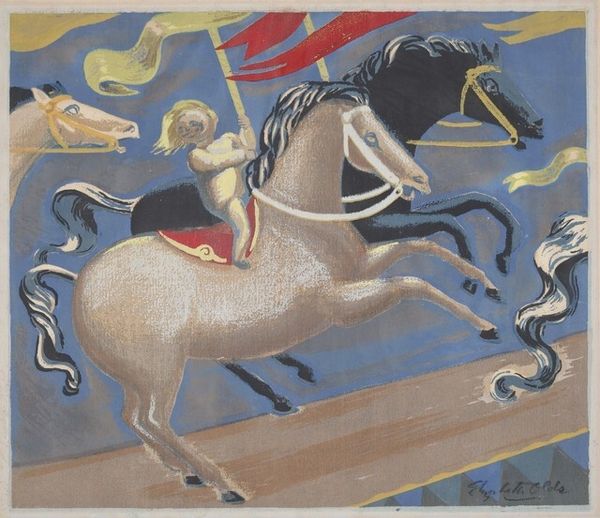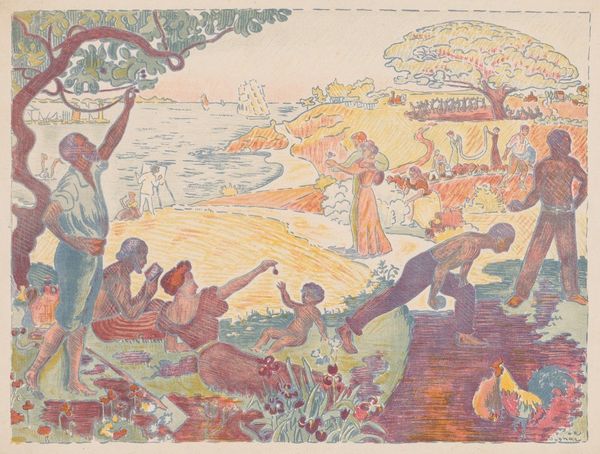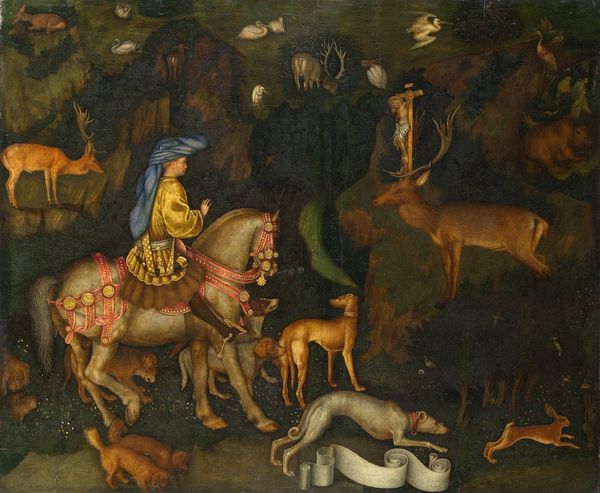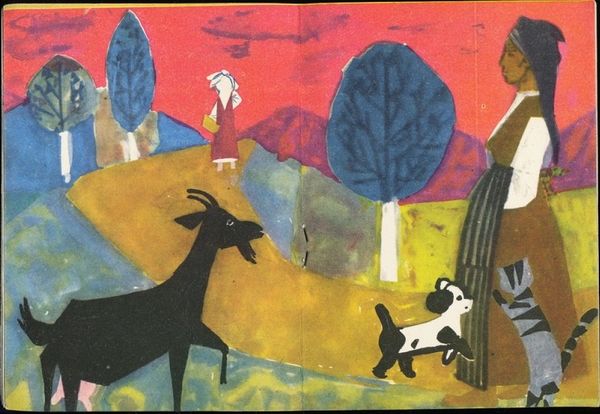
Copyright: Public Domain: Artvee
Editor: This is "Orpheus and the Animals," a painting from around 1924 by Franz von Stuck. What strikes me immediately is its almost fairytale-like quality, but also something slightly unsettling in its stillness. Curator, what catches your eye about this particular work? Curator: Well, seeing this, I'm immediately struck by how Von Stuck utilizes symbolism to explore the power of art within a complex cultural landscape. Think about the early 20th century: mass media is burgeoning, and anxieties about cultural authority are palpable. Orpheus, in this context, isn’t just a mythological figure, but a symbol of the artist attempting to maintain influence in a changing world. Editor: That's interesting. So the animals gathered around aren't just illustrative, they represent an audience? Curator: Precisely! Consider the elephant—traditionally a symbol of wisdom and memory—juxtaposed with the wilder creatures. Von Stuck seems to be suggesting art's appeal spans the spectrum, attempting to cultivate a refined audience capable of discerning the artist's genius amidst societal distractions. Does this resonate with your experience of viewing the piece? Editor: It does now that you mention it! I see it a bit like how museums function. Curator: Yes, absolutely! Museums curate encounters designed to promote a kind of attentive spectatorship and engagement with the work of art, and often, its creator. The goal? Legitimizing certain narratives around art and, of course, its political dimensions. Editor: That connection between audience, mythology and the cultural role of the artist gives me so much to think about regarding this work, which I had missed upon my initial viewing. Curator: It’s the beauty of historical context, isn’t it? It allows us to see these artworks less as isolated masterpieces and more as active participants in ongoing cultural conversations.
Comments
No comments
Be the first to comment and join the conversation on the ultimate creative platform.
